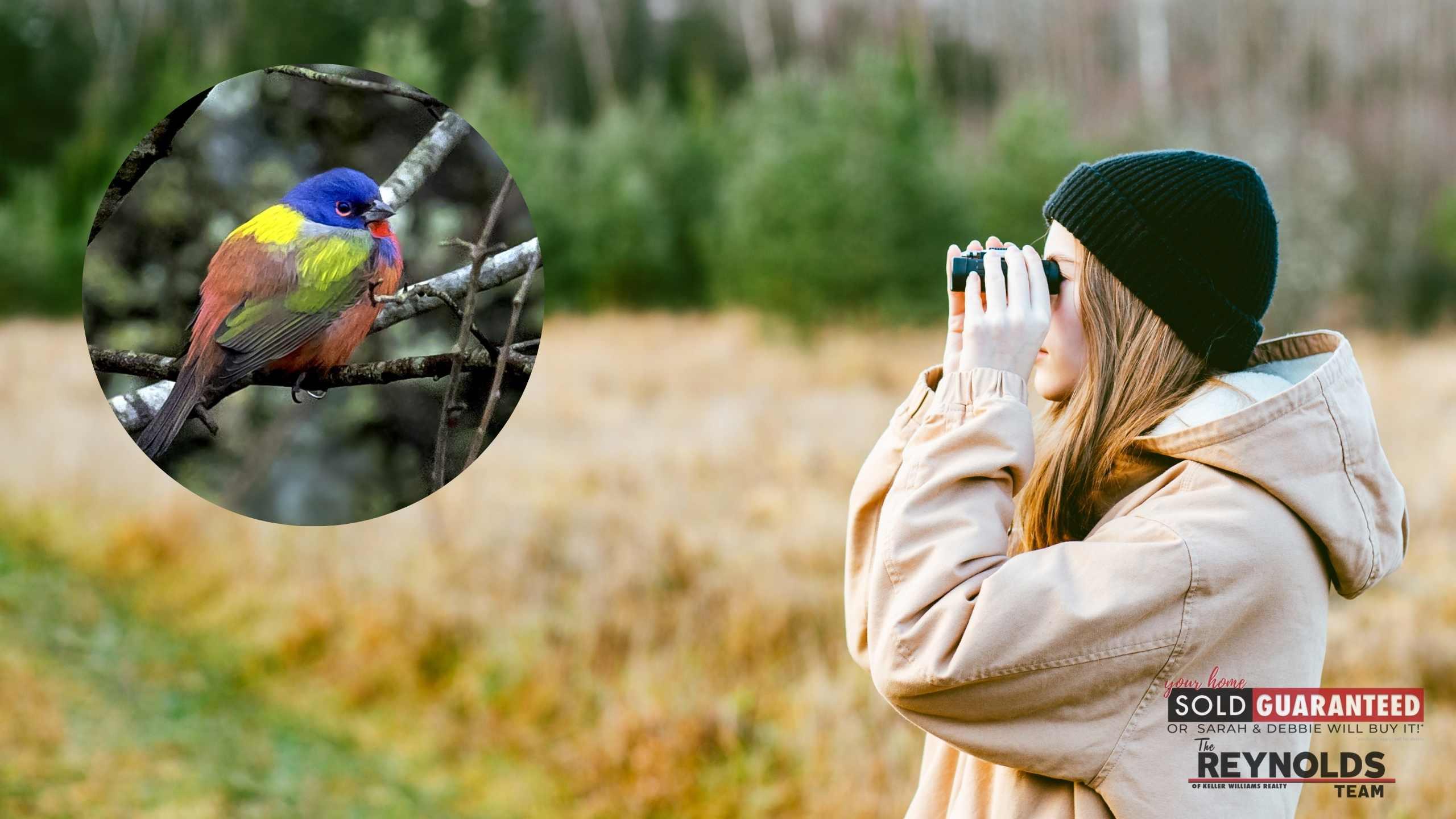There’s nothing quite as rewarding and fascinating as a backyard full of birds of every color of the rainbow. Although it takes some skill and patience to attract the rare bird species of the DMV area, creating a habitat for your fellow avian friends to encourage a visit, and hopefully, a full-time resident, might be within your reach. But be aware, the habitat type, more than any other factor, will, in most cases, dictate the species of bird that visit your property. With that being said, below, we will list seven of the rare and beautiful birds that can be found in the DMV area, what habitat you will need to recreate for each specific type, and how to attract them to your yard.
Before we dive into it, keep in mind every single bird species need a source of fresh, clean, streaming water. It’s best to set up multiple bird baths around your yard and ensure the water is cleaned out regularly since they will be both drinking and bathing in it. Also, it’s important to note that not all bird species will nest in birdhouses—some prefer to be high up in trees, nestled in fallen trunks, buried in shrubs, etc., so if we don’t mention a birdhouse for a particular species, it’s because they will most likely not use one.
Scarlet Tanager
This gorgeous and rare bird can easily be identified by its crimson-red color and black wings and tail. The male’s coloration is intense and deeply red, while females are yellowish on the underparts and olive on top, with yellow-olive-toned wings and tail. They thrive in deciduous forests, so to have a scarlet tanager as your new tenant, you will need to live in a place surrounded by mature trees, specifically by oaks and red mulberry bushes. Since a large part of their diet consists of insects, it’s important you don’t eliminate insects from your backyard ecosystem. Look for ash trees as a sign of an insect-rich yard, and provide a suet or platform feeder with mealworms and fresh fruit to sustain their diet.
Goldfinch
Known for its intense lemon-yellow coloration, the goldfinch actually undergoes molts in the spring and autumn, where they shed most of their feathers, turning a dull brown color that is almost identical in both the male and female. However, in the summer, the males will turn a brilliant yellow, and females will take on a light brown with a pale yellow bib. They prefer an open country where weeds thrive, such as fields, meadows, flood plains, roadsides, orchards, and gardens. It’s not terribly hard to create a habitat for them in your very own backyard—if you have small trees and shrubs such as birches, hemlocks, elms, elderberries, or maples, you are off to a good start. Throw in some aster flowers, perhaps some sunflowers, and you are ready to start attracting these beauties! Hanging tube feeders filled with nyjer, formerly known as thistle, work best for them and is ideal since squirrels and other critters are not typically interested in this type of seed.
Indigo Bunting
Often mistaken as a bluebird, the indigo bunting is a rarer, migrating bird found in brushy forest edges, open deciduous woods, second-growth woodland, and farmland. Males have a cerulean blue body and, in fact, only an indigo head. However, only in the summer will males have this vibrant blue coloration—in the winter, they turn brown, and females are brown year-round. It might be easier than you think to create a habitat for an indigo bunting! Living where a forest meets a weedy field or grasslands is likely to be good enough—they tend to visit yards with tons of shrubs and overgrown grass. Like the goldfinch, the indigo bunting will love a hanging tube feeder full of nyjer, but they also like millet and are attracted to sunflowers, goldenrods, and wild blackberries.
Baltimore Oriole
The reason you might have only seen one or two of these birds in your life is because they spend the majority of their time in the very top canopies of leafy deciduous trees. The good news, however, is that they generally do not reside in deep forests. The species can also be found in open woodland, forest edge, and partially wooded wetlands or stands of trees along rivers. Males are famously orange on the underparts, shoulder patch, and rump, with some birds appearing an intense flaming orange and others appearing yellowish-orange. All of the rest of the male’s plumage is black. Females are yellow-brown on the upper parts with darker wings and dull orange-yellow on the belly. Your only chance of inviting an oriole over for an extended stay is if your yard is an open woodland with tall, mature trees. Specifically, they love wild cherries, maples, and red mulberries. To attract this infamous bird, your yard needs to be inset-friendly, and unlike many other species in this article, they aren’t fond of seeds, they prefer fruit. Halving an orange and leaving it out on a platform feeder is the best way to attract an Oriole—they’ll come down from the canopy because of their innate attraction to the color orange. You may find yourself a new permanent resident if fresh oranges are left out regularly!
Cardinal
There’s nothing quite as extraordinary for us in the Midatlantic as a vibrantly red cardinal gracing us with a visit behind a backdrop of winter snow. Native Americans believe the cardinal symbolizes peace and love and that their delightful winter song brings good omens in the dark winter days. Since this is one of the only colorful bird species in our area that stays throughout the winter, it’s no wonder they’re held in such high esteem! If you’re interested in observing birds year-round, Cardinals are the quintessential species you should invite to your yard. They typically inhabit woodland edges and grassland landscapes with thickets and shrubbery they can hide and nest in. Attract them with dense shrubbery, black-oil sunflower seed, wild blackberry bushes, and red mulberry bushes. They are not picky eaters—you can feed them cracked corn, mealworms, millet, suet, and sunflower seeds, and as long as you have shrubs and small trees, you can create an ideal habitat for them.
Bluebird
Because of their appetite for insects, many gardeners love the presence of bluebirds in their yard. Be careful inviting this bird to your home, though, as they can be territorial and scare off other species. Spot a male bluebird from their blue body and rose-colored stomach, and a female with the same coloring, just slightly muted. They prefer open grassland with scattered trees, so they might be the ideal avian neighbor for those who live in a country-inspired suburban neighborhood. To make the perfect home, offer several birdhouses for nesting with a mounting height of 4’-6’, with a 1.5” hole, a platform feeder with mealworms, and their favorite bushes—winterberry and American holly.
Ruby-Throated Hummingbird
The red-throated hummingbird is the most common hummingbird in our area, and it likely the species that you imagine when you think about the hummingbirds you’ve seen in the DMV. To jog your memory, males of this species have a throat patch that is iridescent ruby red bordered narrowly with velvety black on the upper margin and a forked black tail with a faint violet sheen. Since the red iridescence is highly directional, it can appear dull black from many angles. The female has a notched tail with outer feathers banded in green, black, and white and a white throat that may be plain or lightly marked with dusky streaks or stipples. You can find them in pine forests and forest edges, orchards, and gardens, making them ideal for many different home types. Since they feed on nectar, a garden rich with flowers is likely to attract them, and like the oriole, they are attracted to color, but instead of orange, hummingbirds like the color red. Ruby-throated hummingbirds are solitary, and both males and females of any age are aggressive toward other hummingbirds. They may defend territories, such as a feeding territory, by attacking and chasing other hummingbirds that enter. So if you want a garden full of hummingbirds, you’ll need many nectar feeders set up so they all can have their own space. Attract them with their favorite plants such as bee balms, trumpet honeysuckle, cardinal flower, and anything red!




 By submitting information, I am providing my express written consent to be contacted by representatives of this website through a live agent, artificial or prerecorded voice, and automated SMS text at my residential or cellular number, dialed manually or by autodialer, by email, and mail.
By submitting information, I am providing my express written consent to be contacted by representatives of this website through a live agent, artificial or prerecorded voice, and automated SMS text at my residential or cellular number, dialed manually or by autodialer, by email, and mail.


